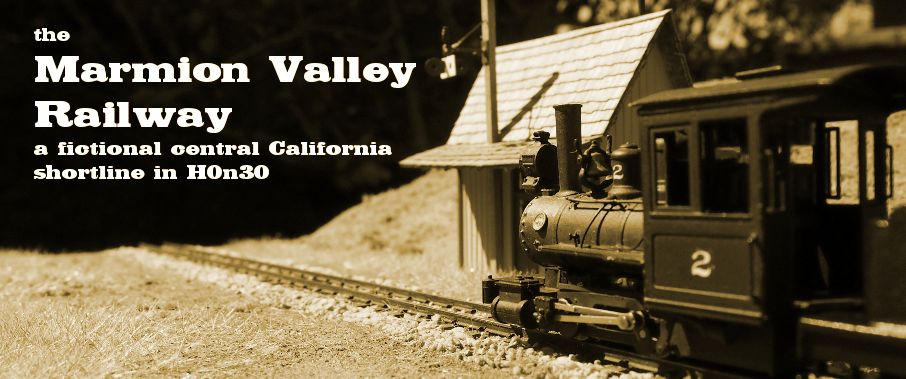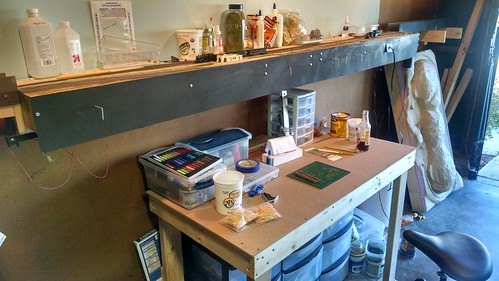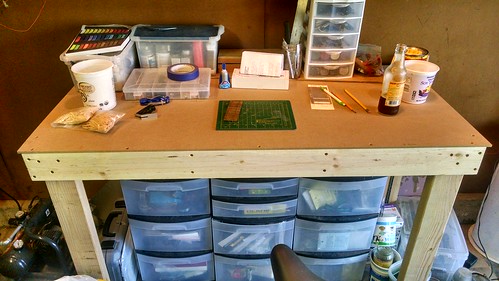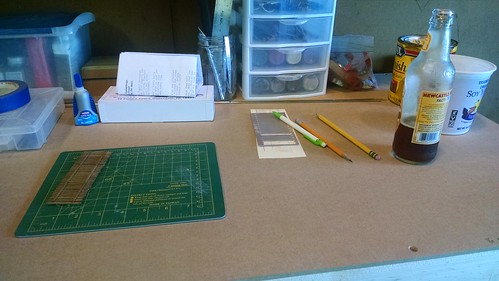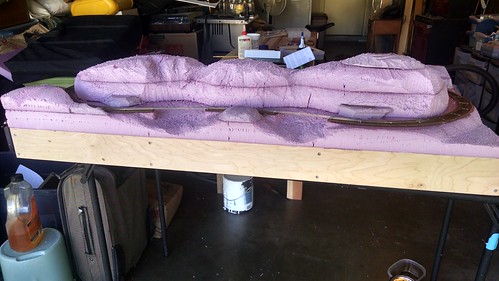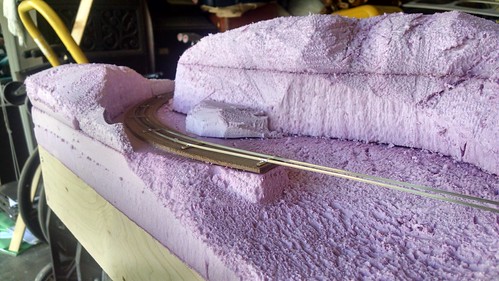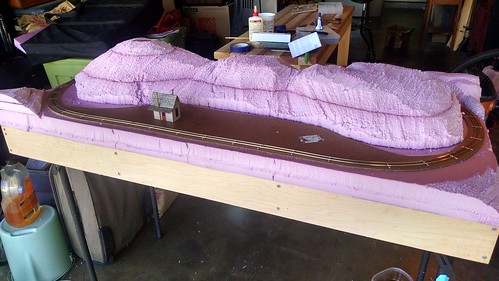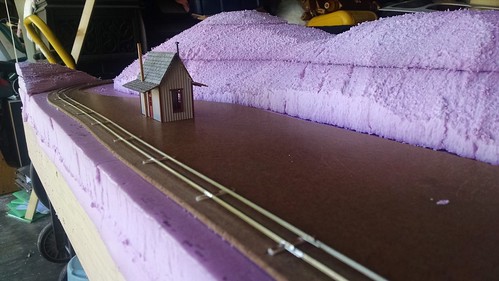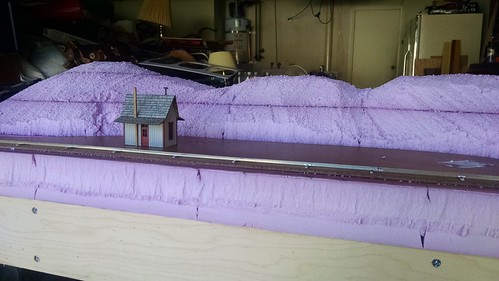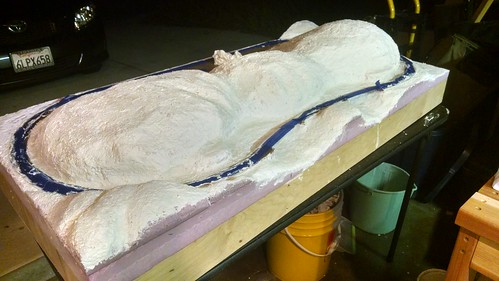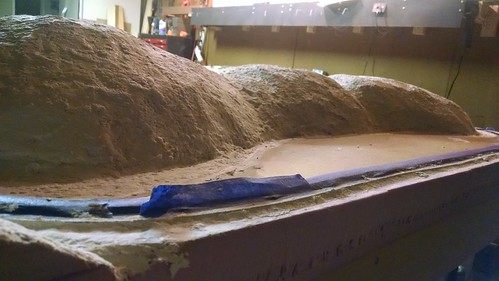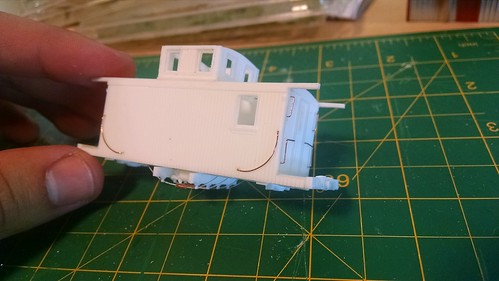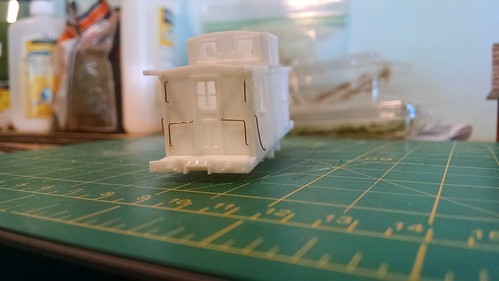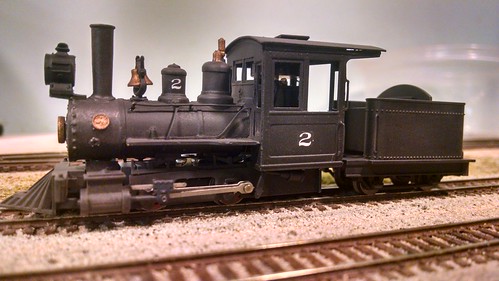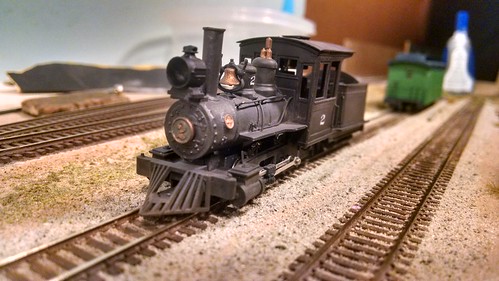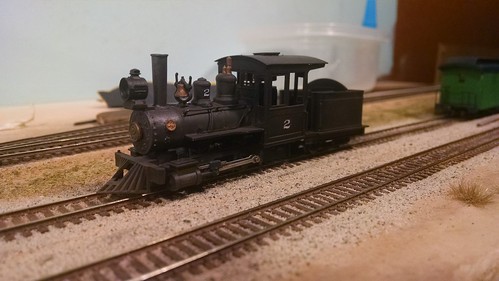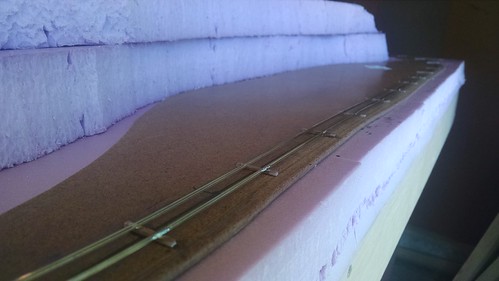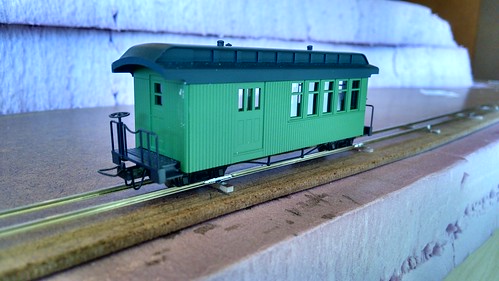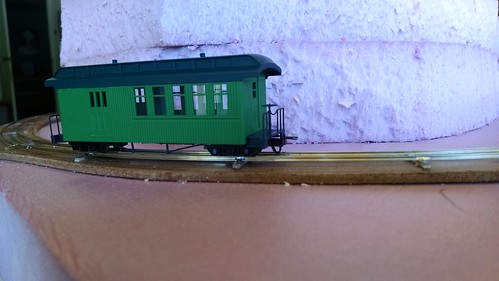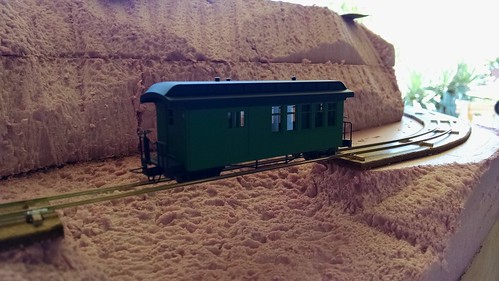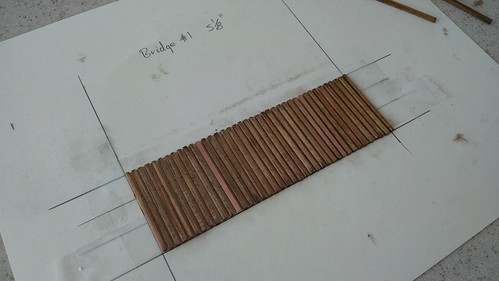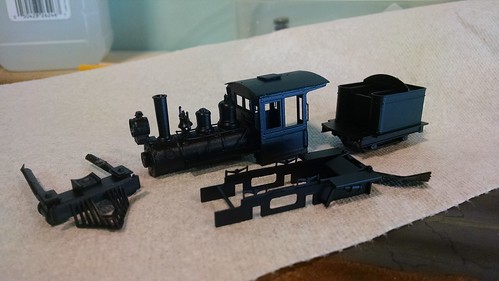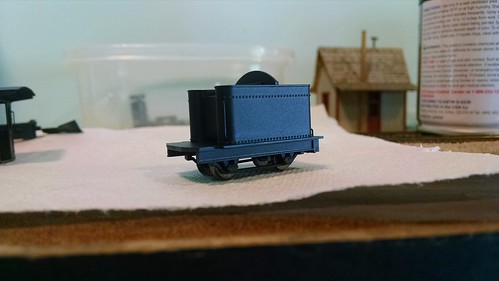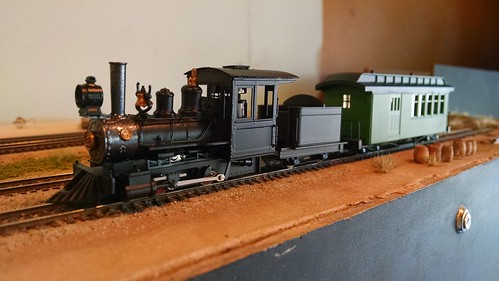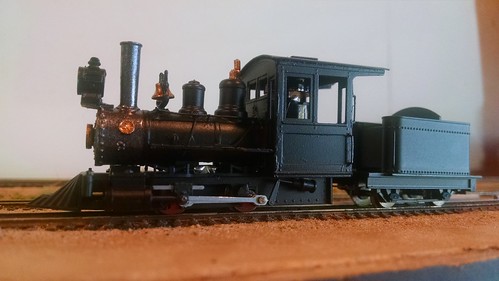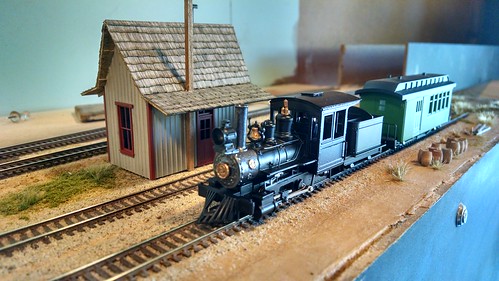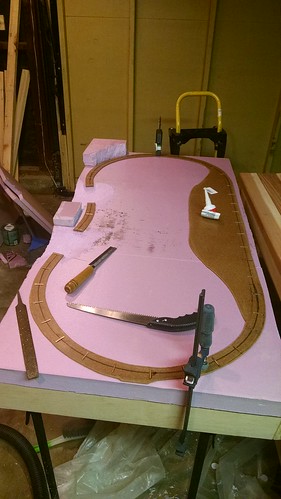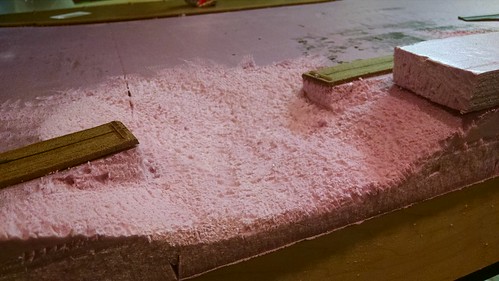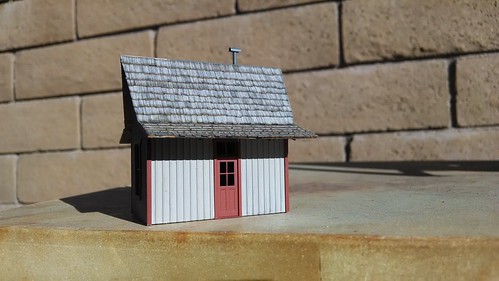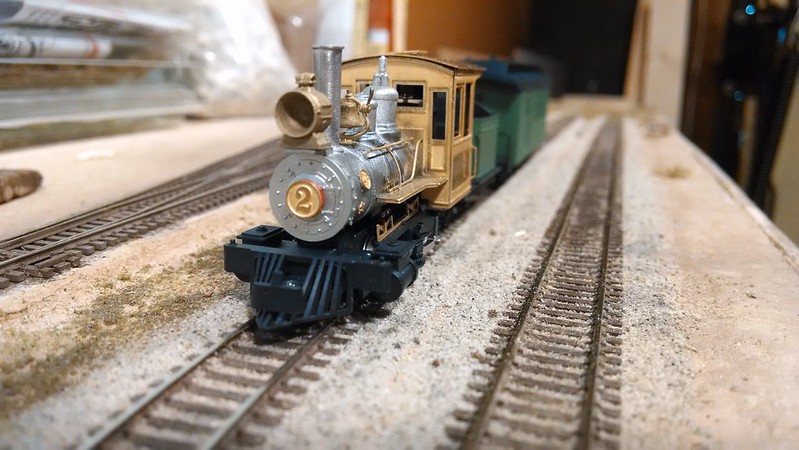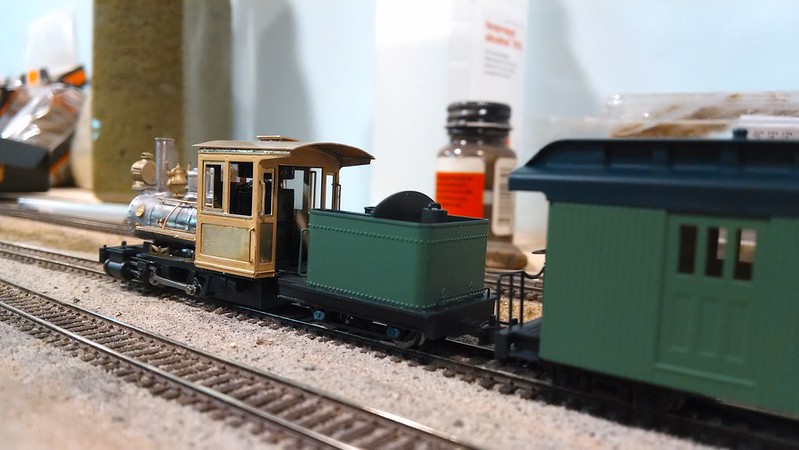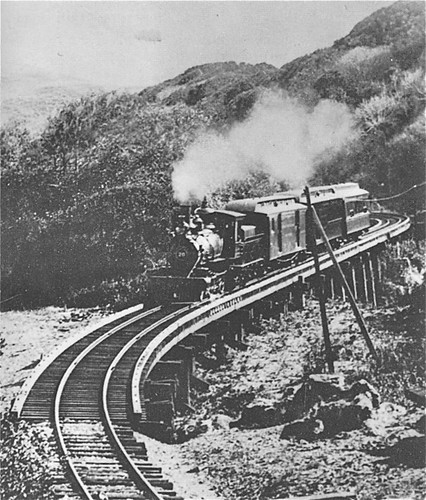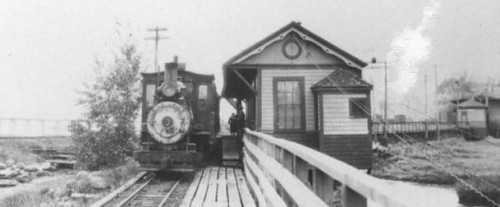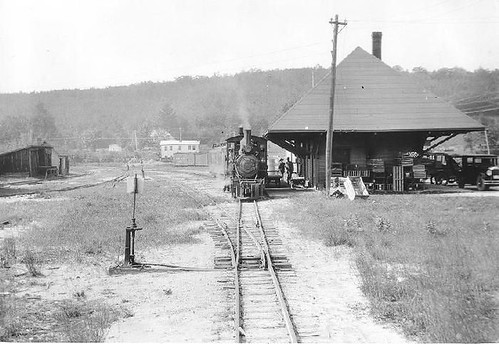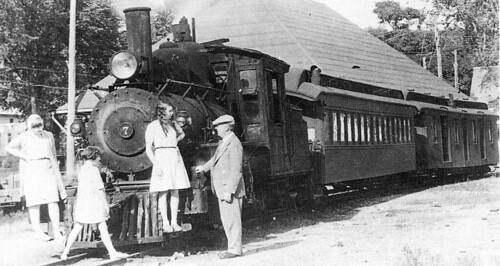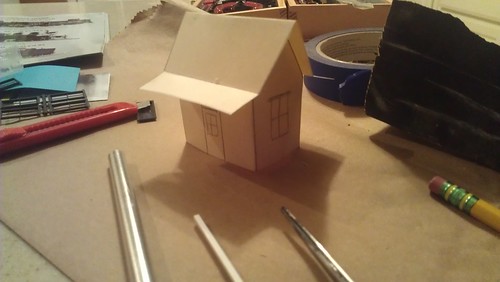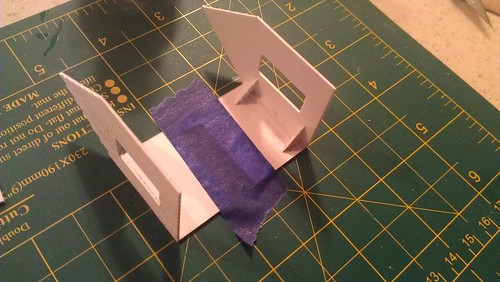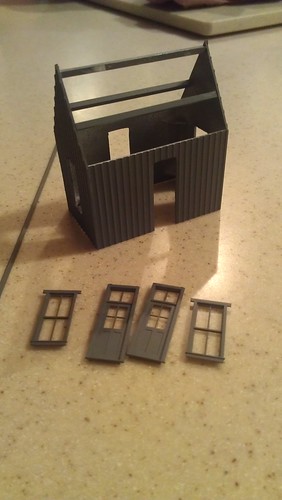One of his design axioms really hit home; namely, plan to have the layout in a place where it will be easily accessed and used. I think one of the reasons I have had such a dry spell working on my current 2x4 layout is the fact that I need to go out to the garage, clear a space and prop the layout up on a table to even start working on it.
So, I've decided to take a crack at designing a micro-layout version of the Marmion Valley that will sit atop an IKEA "expedit" bookcase in my office.
The Expedit (on its side) gives me 16" of depth and about 58 3/4" of length to work with. I wanted a continuous run, a passing track, and the opportunity to have a bit of light switching.
The long tangent track in the back of the layout will be hidden by a low ridge/treeline. You'll note that visible track is intentionally sweeping/curved to help lead the eye into the scenes; a trick that will help the layout appear larger than it really is.
The 7" radius is tight, but not unheard of in the world of micro-layouts. More importantly, it's well within the operating range of my little 0-4-0, as evidenced by this YouTube video of the same set navigating Tomix 103mm (4"!!!) curves:
I'm considering abandoning handlaid track in favor of Peco's bulletproof HOn30 line. The code 80 rail profile is a drawback, but I could live with it. I'd still handlay my own #5 turnouts.
The little depot I scratchbuilt will have a home on this layout, as will a number of other "railroady" structures like a small water tower, coal bunker, freight house, etc.
I'm still tossing around ideas for the industry that will occupy the middle spur. I'm leaning towards a stock pen at this point.
Most likely, this will be constructed in two 29" modules to allow for easy tuck-away storage and transport if needed. Ideally, I will stain the fascia to match my bookcase for a very clean, tidy presentation; DC control could be built into the fascia as well. It would be fun to exhibit this layout at shows; while that was originally a plan in my mind for the 2x4 layout, it still isn't as eminently portable as a set of small modules would be.
I'm excited about this idea; I wouldn't be abandoning the 2x4 layout altogether, but I think this little micro will be an attainable goal in the interim.
